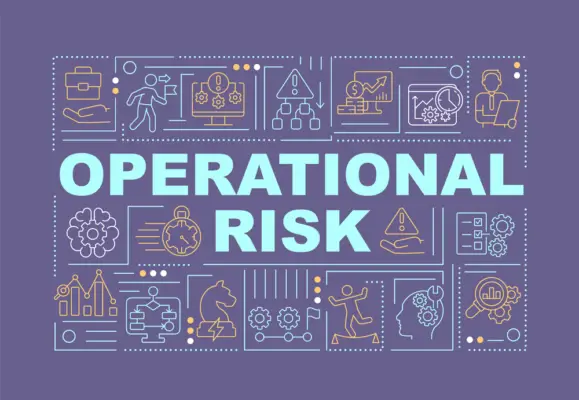Compliance risks are always evolving, making it essential for organizations to monitor their compliance program continuously. Compliance key risk indicators (KRIs) can help organizations identify and assess compliance risks, set priorities, and allocate resources accordingly. Key risk indicators are part of an enterprise risk management program. Some examples of compliance KRIs include:
* The number of complaints filed with the organization’s compliance hotline
* The number of employees who have completed mandatory compliance training
* The number of external regulatory actions taken against the organization
* The number of times an organization’s code of conduct has been violated
* The number of corrective action plans implemented in response to non-compliance issues
A key element of a successful risk management program is to manage the risks of the environment in a risk appetite framework. Risk appetite is a firm’s willingness to take to meet business needs and key operational risk indicators.
The risk indicator is measured in terms of assessing risk exposures in a system that can be monitored for a given time period. Therefore all data capable of performing these functions are considered risk indicators and can show emerging market risk indicators and trends.
The key performance indicator is essentially key in the case that it is assessing significant risks exposure (a material risk), when it’s particularly successful (a key indicator), or perhaps both. Existing risk identification methods lead to key risk indicators in a timely manner.
Managing risk management is an important part of the business process that allows companies to reduce their most significant risks. Risk assessments and identification effective risk management processes must be incremental and active.
Auditors must revise and modify risk assessment procedures throughout rapidly evolving or complex situations. To help companies identify potential threats and improve future readiness, it’s essential that you develop a key risk indicator. It helps your organization avoid various types of risks which might hinder its business plan.
Most companies discuss key performance factors. The other side of that coin has a key risk indicator. Key risks should be identified to achieve business objectives. Although best key risk indicators are a way to predict risks, your organization faces, focusing on developing key risk indicators and concerns focuses your attention on specific risks, if any.

Banks face changing landscapes; challenges arise in numerous places for financial institutions, and risk may affect one area. One of the key considerations by a financial institution is to quantify market risk. According to the report, the ABA Banking Journal reported that cyber threats remain the biggest threat to banks.
Every institution must monitor its security updates to prevent hackers from acquiring and destroying data from its systems. There is another risk other than ransomware and other hackers.
Compliance professionals always look for new and innovative ways to identify organizational risks. One way to do this is by monitoring key risk indicators (KRIs). In understanding of which KRIs are most important to your organization, you can better focus your efforts on mitigating potential risks. In this blog post, we will provide examples of some common KRIs, as well as tips on how to monitor them effectively. We hope that you find this information helpful!
KRI (Key Risk Indicator): What is KRI?
A key risk indicator (KRI) is a metric that measures an organization’s exposure to specific risk,. KRIs are used to identify, assess, and track risk in a variety of domains, including financial, operational, strategic, and reputational risk.
KRIs provide insight into an organization’s overall risk profile and can be used to set thresholds for triggering a response. Common examples of KRIs include measures of credit risk, liquidity risk, and market risk.
While KRIs are typically financial in nature, they can also be non-financial, such as measures of employee turnover or customer satisfaction. KPIs are often used in conjunction with KRIs to provide a more holistic view of an organization’s risks.
To develop KRIs, you must be aware of company targets and weaknesses causing potential risks. It consists mainly in the risk landscape and identifying the major threats. These risks are those with the most potential consequences, those with the biggest impact a person may be able to control, or those not controlled by your company at all.
If you’ve defined key performance indicators, you can create KRIs easily. This reduces time spent identifying key business areas and identifying key business functions. KRI selection needs to be pertinent and timely to identify potential risk exposure.
Key risk indicators are indicators that are used to determine the potential risks of a business. How can we understand KRI by simply thinking of alarm systems? When something is heading towards an earthquake, your risk assessment, will make it obvious that it will go wrong.
KRIs are merely an evaluation tool for overall risk assessment and monitoring. Although you won’t understand all the risks a company faces, you should take reasonable measures to stay at the forefront.
Key risk indicators provide a predictor of undesirable events affecting organizations. By setting KRIs, businesses can identify and monitor risks. Integrated risk management systems allow for better risk management strategies in organizations.
It is not possible to predict the number of KRIs a company needs. Consider whether there’s an estimated risk to the organization and how much data can be obtained to determine its potential. Understanding KRIs is an important factor for leaders in business.
How can I identify key risk indicators for my business?
A leadership team’s responsibility includes evaluating performance management and ensuring that its targets and objectives have been fulfilled. The leader in a KRI is expected to see – every time – information that tells them the current situation, and includes the KRIs.
When the KRI exceeds the required threshold, the risk events alerts the risk management teams about heightened potential risk exposure. But KRI is only useful when it has been created through this simple yet efficient method to manage risks.
Establish Your KRIs
The context establishing KPIs, will help create KRIs effective key risk indicators. KPIs should be able to provide information about the overall performance to reduce the time for monitoring and the necessary resources required. Example of key risk indicators include system failures indicating a key business attributes of an organization’s risk profile being affected.
Remember, KPIs transferred into KRi should be timely, quantifiable, and make sense. They need to be early warning signals of risk mitigation responses. This KRI will manage potential risks of security breach and monitor performance of the network.
Identify Relevant Risks
Before creating the KRIs, the company should know the organization’s goal and the potential risk points. Effective enterprise risk management requires pinpointing the biggest risk factors that could have the largest impacts, the highest probability to occur, or that does not fall within your business control.
A full risk assessment of the organization actioned by senior management will help in identifying key risk indicators kris say.
Establish a solid process
Because KRIs are developed within each organization a strong process is required to create, assess and monitor them and to report them to relevant people. This is a good technique that should make everything run smoothly.
Purpose of KRI
The purpose of KRI is to ensure that an organization’s risks are being monitored effectively and efficiently. KRIs help to assess an organization’s current risk exposure and identify potential future risks. They can be used to make risk mitigation strategies, track progress in reducing risk and to benchmark an organization’s risk management performance against other organizations.
KRIs can also be used to support decision-making around resource allocation and prioritization of activities. In short, KRIs play a vital role in helping organizations to manage risk effectively.
KRIs are key players within risk management processes. In the absence of KRIs proactive risk management, it seems extremely likely that the organization will face a scenario with potential massive damages. KRIs help prevents a potential disaster from being identified and managed and prevent its escalation as soon as possible.
An essential criterion for the development of email automation is deliverability. Increased emails being returned by recipients indicates a problem that needs immediate attention. KRIs are considered ‘important’ for internal acceptance.

Choosing KRIs & Challenges
Identifying and evaluating key performance indicators is an essential step for selecting the best KRI. KRIS – First, determine the likelihood of causing the potential risk of an action. The KRIs must be quantifiable for your business.
Once you get a KRI, there is a continuous monitoring process. With an integrated risk management system, you can address any KRI that triggers actions. The decision to track the KRI may present challenges. However, if you have technology that helps you avoid a situation like this one, you will avoid the problem.
Some organizations face challenges when establishing KRIs, as they lack adequate protection from risks associated with their design. However, choosing the right KRIs can be a challenge in itself. There are a few factors that should be considered when selecting KRIs, such as the organization’s goals, the resources available, operational risk indicators and the data that needs to be collected.
Additionally, it is important to consider how the KRIs will be used. Will they be used to measure progress towards goals? To identify areas of improvement? To make decisions about resource allocation? Once the purpose of the KRIs has been determined, it will be easier to select those that are most relevant to the organization’s needs.
The problem organizations face when dealing with KRI dashboard is in analyzing data. Although the first requirement is selecting a quantifiable measure, the second must ensure that we are accessible and convert necessary data to understandable bits. Many organizations do not have adequate resources.
It is important to choose software that manages information and keeps them safe. Despite this fact, many companies have disparate data sets across all organizations. From spreadsheets to manual data entry, errors are often present with the data that is subsequently delayed.
How do key risk indicators help companies identify emerging risks?
As the COVID age approaches, unforeseen risks can impact audit risk areas. While government and healthcare organizations will probably emphasize assessing the pandemic risk of an outbreak, other companies will focus on developing and bolstering risk analysis plans. Kris assist in identifying and defining risks for organizations as they are an important means of protecting operational and business risks.
Business Unit Responsibilities
Several business units in each state must identify their respective KRIs, set the thresholds for monitoring each KRI state, and escalate variances against them.
It is important that industry guidelines and internal acceptance criteria influence these levels. All thresholds will be carefully evaluated and approved by key stakeholders.
Internal Audit Responsibilities
An internal audit will be needed to verify and provide assurance regarding the processes used for KRI. In addition, internal audits must report any exceptions to the KRI and document the violation.
Risk management responsibility
Before identifying a KRI, risk management teams must build an organizational framework.
Steps to develop Key Risk Indicators
- Define the organization’s risk appetite: What level of risk is acceptable? This will vary from organization to organization, but it’s important to have a clear understanding of what level of risk is tolerable before proceeding.
- Identify the organization’s key risks: Once the risk appetite has been defined, it’s time to identify which risks pose the greatest threat to the organization. This can be done through a variety of methods, including interviews, surveys, and data analysis.
- Develop KRIs: Once the organization’s key risks have been identified, it’s time to develop quantitative indicators that can be used to monitor those risks. When developing KRIs, it’s important to consider factors such as data availability, frequency of measurement, and target values.
- Implement a monitoring system: Once the KRIs have been developed, it’s time to put in place a system for monitoring them. This system should be designed to help identify early warning signs of potential problems so that corrective action can be taken before those problems occur.
- Review and update KRIs regularly: KRIs should not be static; they should be reviewed on a regular basis and updated as needed to ensure that they remain relevant and accurate.
Sample Key risk indicators ( Compliance Risks)
The list of sample key risk indicators of banks can be viewed by any individual employee whose skills have evolved with the risk management team. These listings should use existing benchmarking and allow comparison of businesses over time and across industries.
Operational Risk Indicator Example # 1 – Percentage of projects currently in progress that are delayed (Overall)
The number of projects that are now underway and are retarded in proportion to the total number of projects that are currently in development. Justifications for measuring KRI – The measure measures the risks involved during the delay.
A high number of delayed projects may signal problems in project plans, resource allocation, capacity management, project completion, budget, and project management. Excess delays resulting from project projects are risk-averse.
Operational Risk Indicator Example # 2 – Number of Accounting Deadlines Missed -External
Total number of external accounting deadlines missed by regulators in measurement period. Reasons for assessing this metric – This measure measures the risks arising from failure to comply with regulatory deadlines.
Having not met all regulatory requirements and deadlines can cause penalties for violations or revocation of business credentials. This factor will affect the organization’s ability to work in certain areas, affect its position within regulatory authorities and potentially lead to avoided fees.
Operational Risk Indicator Example # 3 – Percentage of Journal Entries Performed Manually
The number of journal entries completed manually per cent of total journal entries made during measuring periods. The KRI is measured in a simple way by calculating the risk that occurs during an extremely manual journal entry procedure.
In the journaling or accounting industry, manual processing has significantly heightened the risk of errors, omissions or non-authorisation activities in journals and other ledger management activities. Manual journals are often used in accounting functions.
Operational Risk Indicator Example # 4 – Number of Detected Deviations from GAAP
Total detected deviations from GAAP during measurement. This measure is intended to measure the risk of deviation from GAAP in the accounting process. A failure to adhere to GAAP can lead to errors in financial reports, potentially fraudulent activities or regulator issues which expose organizations to financial and reputational harm.
Poor practice can negatively affect organization capacities due to excess work required for correcting accounting errors, adjustment process etc. The process of adjustment is largely automated.
Operational Risk Indicator Example # 5 – Number of Accounting Deadlines Missed -Internal
The amount of internal accounting deadlines missed by managers during measurement periods. Why is KRI measured – The measure measures the risk of not meeting a manager’s deadlines i.e service level agreement.
Failure of management accounting deadlines can negatively influence organizational structure by restricting managers knowledge about company operations which could further hamper management’s decision-making ability, especially regarding organizational liquidity and/or investment.
Operational Risk Indicator Example # 6 – Number of Regulatory Report Restatements
Number of reports reported on external financial statements for the period relating to external financial reports. KRI measures risks resulting from submitting regulatory reports containing errors or other errors.
Errors or incomplete regulations can lead to penalties for the violation of a regulatory regulation, disciplinary proceedings or to a loss of trust with the regulator or auditor or reputation damage. Revisions of reports can affect organizational capacity and interfere with day-to-day duties of the finance function.
Operational Risk Indicator Example # 7 – Total Number of Post-Close Adjustments
Justification for measuring KRI – This measure identifies the potential risk associated with the excessive amount of adjustments required after close.
A post-close adjustment is normally linked to errors and omissions in an initial accounting journal and related reports that indicate that organizations have no effective accounting controls or established accounting procedures. Excessive post-close adjustments can affect organizational capacities through rework.
Operational Risk Indicator Example # 8 – Number of Management Report Restatements
Total number of reports for Internal Expense Reports. This measure measures the potential risks of management reporting which are influenced primarily by errors in the reporting of the organization’s financial condition and other inaccuracies.
Report errors and incomplete information can inhibit management decision-making abilities especially when assessing organization liquidity, investment and budgets.

Operational Risk Indicator Example # 9 – Percentage of Vendor Payments with an Approved Purchase Order
The amount paid to vendors by a customer that reaches the approval date. This measure measures controls on a company vendor’s unauthorized payment to their suppliers.
Purchasing a product with approved purchases helps in ensuring the product has taken the necessary steps within an organization required for authorization and payment.
Operational Risk Indicator Example # 10 – Budget Variance (Budgeted vs. Actual) – Firm-Wide
Generally a measure of the actual costs a company incurs for its operations over the specified period. Reasons for measuring KRI – This metric measures risks resulting from cost underestimating.
Budget variances may also show outdated forecasts or the change in economic conditions which could result in increased uncertainty and less confidence in budgeting.
Conclusion
Compliance Key Risk Indicators (CKRI) are important for organizations to be aware of in day to day operations, as they can help identify areas in which a company may be at risk for non-compliance. Effective kris can be possible with a control environment and mission critical activities.
-There are many different CKRI that an organization can use to assess its regulatory compliance and posture, and each indicator will vary depending on the specific industry or regulatory environment.
-Some examples of Compliance Key Risk Indicators include: having effective anti-corruption policies and procedures in place, conducting due diligence on business partners, regarding customer complaints, maintaining accurate financial records, and protecting customer data.
If you would like more information on how your organization can implement CKRI into its compliance program, please contact us. We would be happy to discuss this further with you.

Chris Ekai is a Risk Management expert with over 10 years of experience in the field. He has a Master’s(MSc) degree in Risk Management from University of Portsmouth and is a CPA and Finance professional. He currently works as a Content Manager at Risk Publishing, writing about Enterprise Risk Management, Business Continuity Management and Project Management.


Definitely believe that which you said. Your favorite justification seemed to
be on the net the simplest thing to be aware of. I say to you,
I definitely get annoyed while people think about worries that they
plainly don’t know about. You managed to hit the nail upon the top and also defined out the whole thing without having side effect , people can take a
signal. Will probably be back to get more. Thanks